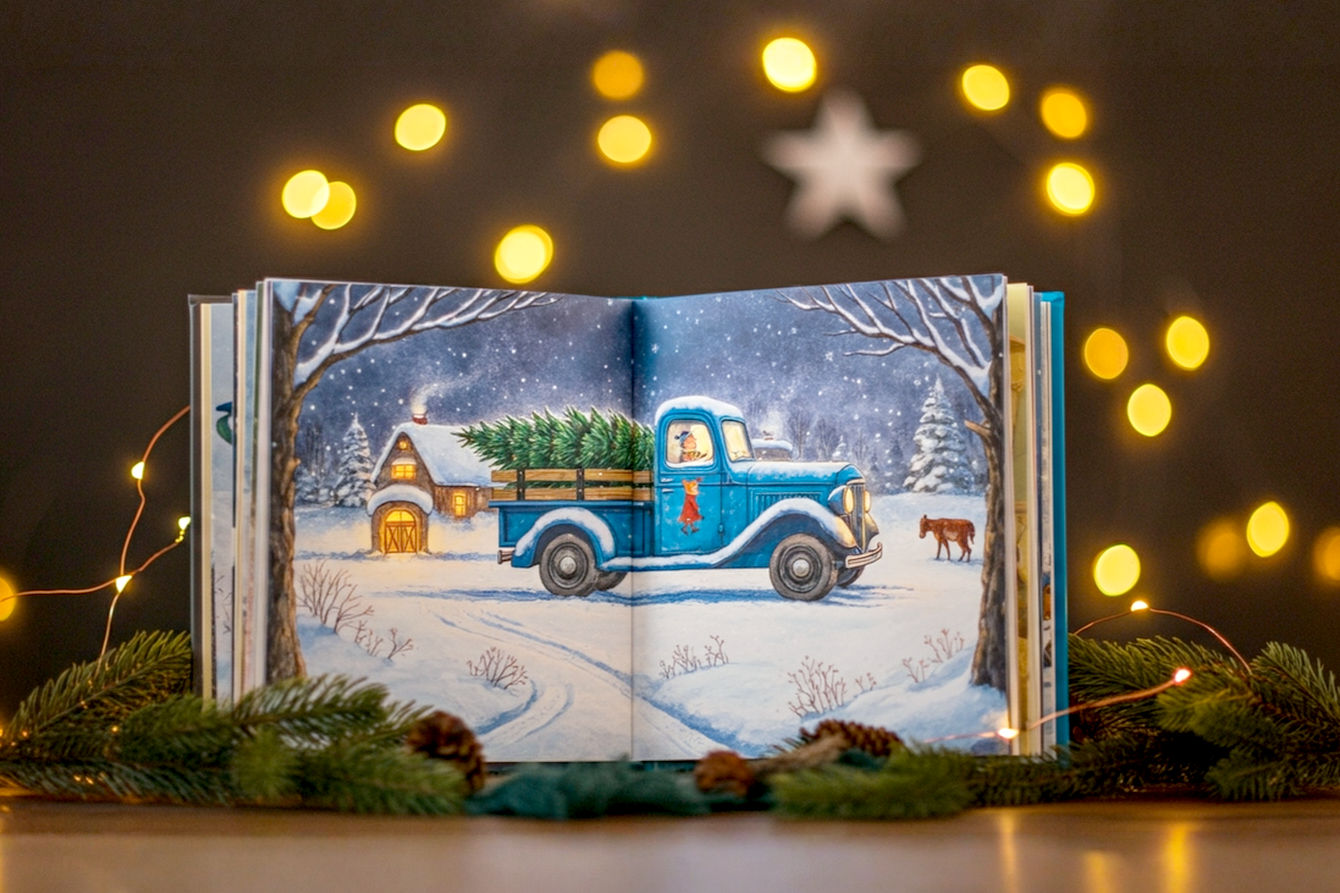This post may contain affiliate links. If you make a purchase through these links, we may earn a commission at no additional cost to you.
As the festive season approaches, workplaces across the UK often buzz with a unique energy. It’s a time for reflection, celebration, and, crucially, for strengthening the bonds that hold teams together. While the tinsel and mince pies are certainly welcome, the true magic of Christmas in the workplace lies in its potential to significantly boost morale through well-planned team building activities.
High team morale isn’t just a “nice to have”; it’s a fundamental driver of productivity, innovation, and employee retention. When your team feels valued, connected, and supported, they’re more likely to be engaged, resilient, and committed to their work. Christmas offers a perfect, naturally celebratory backdrop to invest in these crucial connections. This article will explore the undeniable value of festive team building and then delve into seven stellar activities designed to inject joy and camaraderie into your workplace this holiday season. From charitable challenges to virtual game nights, we’ll cover ideas that can help your team finish the year strong and start the new one even stronger.
The Undeniable Value of Festive Team Building
The end of the year can be a demanding period for many businesses, often marked by tight deadlines and increased workloads. Amidst this pressure, it’s easy for morale to dip. This is precisely why the Christmas period presents a unique opportunity for strategic team building. It’s not just about throwing a party; it’s about making a deliberate investment in your people and your company’s future.
Beyond the Baubles: Why Invest in Christmas Team Building?
Investing in Christmas team building goes far beyond simply decorating the office or exchanging small gifts. These activities are designed to create meaningful interactions that yield tangible benefits for both individuals and the organisation as a whole. They provide a vital counterpoint to the usual work pressures, allowing employees to connect on a more personal level and recharge their batteries.
Enhancing Communication and Collaboration
One of the primary benefits of well-executed team building is its ability to break down silos. In many organisations, departments or even individuals can become isolated, focusing solely on their own tasks. Festive activities, particularly those that require joint effort, naturally encourage informal communication. When colleagues from different teams collaborate on a festive charity drive or compete in a Christmas quiz, they’re forced to interact, share ideas, and understand each other’s perspectives outside of formal meetings. This informal interaction often leads to better understanding of roles and responsibilities, fostering a more cohesive and collaborative working environment even after the tinsel is packed away. The relaxed setting allows for open dialogue, which can uncover new ways of working together more effectively.
Boosting Employee Engagement and Retention
Christmas team building is a powerful way of showing appreciation for your employees’ hard work throughout the year. When an organisation invests time and resources into creating enjoyable experiences, it signals that employees are valued beyond their output. This recognition significantly boosts employee engagement, as individuals feel seen and acknowledged. A strong sense of belonging, cultivated through shared positive experiences, is also a critical factor in employee retention. People are less likely to seek opportunities elsewhere when they feel genuinely connected to their colleagues and the company culture. These festive moments create lasting memories, reinforcing a positive emotional connection to the workplace.
Reducing Stress and Preventing Burnout
The lead-up to Christmas can be incredibly stressful for many, both professionally and personally. Providing structured, fun team building activities offers a much-needed break from the daily grind. These events serve as a release valve, allowing employees to decompress and enjoy themselves. Engaging in light-hearted activities can significantly reduce stress levels and help prevent burnout, a common and costly issue for businesses. By encouraging work-life balance and demonstrating a commitment to employee wellbeing, companies can help their staff return to their tasks refreshed and re-energised, rather than exhausted and disengaged.
Fostering a Positive Company Culture
Shared experiences are the bedrock of a strong company culture. Christmas team building activities provide opportunities for building shared memories that contribute to the collective identity of the team. Whether it’s the competitive spirit of a festive bake-off or the shared satisfaction of a successful charity challenge, these moments reinforce the company’s values in a tangible way. For example, if a company values collaboration, an activity that naturally fosters teamwork will strengthen that value. A positive culture, characterised by mutual respect, support, and camaraderie, makes the workplace a more enjoyable and productive environment for everyone.
Recognising Achievements and Hard Work
The end of the year is an ideal time to celebrate collective successes and acknowledge individual contributions. Christmas team building activities can be designed to incorporate elements of recognition, whether through informal shout-outs, small awards, or simply dedicated time to reflect on the year’s accomplishments. This acknowledgment is vital for morale, as it validates employees’ efforts and reinforces the idea that their hard work is noticed and appreciated. It’s a chance to collectively pat yourselves on the back and appreciate how far you’ve come as a team.
Planning for Success: Key Considerations for Your Christmas Activities
While the idea of festive team building is exciting, successful execution requires careful planning. Rushing into activities without considering key factors can lead to missed opportunities or, worse, a negative experience. Thoughtful preparation ensures that your efforts genuinely contribute to boosting morale and achieving your desired outcomes.
Setting Clear Objectives: What Do You Want to Achieve?
Before you even think about specific activities, ask yourself: What do you want to achieve with this Christmas team building event? Is the primary goal to improve inter-departmental communication, reduce stress, foster a sense of community, or simply provide a fun break? Defining measurable goals, even if qualitative, will guide your choices. For instance, if your objective is to “improve inter-departmental communication,” you might choose an activity that forces cross-functional teams to work together, like a festive quiz with mixed teams. Without clear objectives, activities can feel arbitrary and fail to deliver meaningful impact.
Budgeting Wisely: Making Every Penny Count
Your budget will significantly influence your options. It’s crucial to budget wisely and understand that effective team building doesn’t always require a hefty investment. There are fantastic low-cost options that can be just as impactful as high-investment ones. For example, a DIY decoration workshop using recycled materials might cost very little but create significant shared ownership. Consider leveraging internal resources, such as using an office space for an event instead of hiring an external venue, or asking employees to contribute skills (e.g., someone who loves baking could organise the bake-off). The key is to maximise the value of every penny, ensuring the chosen activity aligns with your financial constraints without compromising on the experience.
Inclusivity First: Ensuring Everyone Feels Welcome
This is perhaps the most critical consideration. Christmas, while widely celebrated, is not universally observed, and people have diverse backgrounds, beliefs, and abilities. It’s paramount to design activities with inclusivity first, ensuring everyone feels welcome and comfortable. Avoid overtly religious themes, focusing instead on universal festive elements like joy, giving, and community. Offer alternative activities if some employees cannot participate due to personal beliefs or physical limitations. For example, if a physical challenge is planned, ensure there’s a less strenuous, equally engaging alternative. Consider dietary restrictions for any food-related events and ensure venues are accessible. A truly inclusive event is one where every single employee feels valued and included.
Logistics and Timing: Seamless Execution
The success of any event hinges on seamless execution. This involves meticulous attention to logistics and timing. Choosing the right date and time is crucial; avoid peak work periods or times when many employees might be on holiday. Distribute invitations well in advance and manage RSVPs effectively to get an accurate headcount. If food is involved, gather dietary requirements early. Ensure all necessary equipment (e.g., AV for a virtual event, craft supplies for a workshop) is ready and tested. A well-organised event demonstrates professionalism and respect for employees’ time, contributing to a positive experience.
Communication is Key: Building Excitement
Effective communication is key to building excitement and ensuring maximum participation. Don’t just send a calendar invite; promote the event effectively. Explain the “why” behind the activity – how it will benefit the team and contribute to a positive workplace culture. Use internal communication channels (e.g., Slack, email, intranet) to create a buzz. After the event, gather feedback, perhaps through anonymous surveys or informal check-ins. This not only helps you understand what worked well but also shows employees that their opinions are valued, informing future team building efforts.
Seven Stellar Christmas Team Building Activities for the Workplace
Now that we’ve covered the crucial planning aspects, let’s dive into seven practical and engaging Christmas team building activities that can significantly boost morale in your workplace. Each activity offers unique benefits and can be adapted to suit various team sizes, budgets, and workplace cultures.
Activity 1: The Festive Charity Challenge
Concept and Objectives
The Festive Charity Challenge combines the spirit of team building with the profound satisfaction of giving back to the community. This activity leverages the inherent generosity of the Christmas season to foster a sense of collective purpose and achievement within your team. The primary objective is to unite employees around a shared philanthropic goal, encouraging collaboration and empathy, while also making a tangible positive impact on those less fortunate. It moves beyond typical office fun to something more meaningful.
Examples of such challenges include organising a food bank drive, where teams compete to collect the most non-perishable items; a toy collection for children in need; or an “adopt a family” initiative, where teams pool resources to provide gifts and necessities for a specific family identified by a local charity. These initiatives tap into the universal desire to help others, especially during the holidays.
Implementation Details
To implement this, first, identify a local charity or cause that resonates with your employees. Conduct a quick internal poll to gauge interest. Once a charity is chosen, form teams (e.g., by department or randomly mixed) and set clear, achievable goals for each team. For instance, “Team A aims to collect 100 kg of food” or “Team B will raise £500 for toys.” Provide a clear timeline for the collection or fundraising period.
It’s vital to track progress publicly, perhaps on a whiteboard in a common area or a shared online document, to maintain momentum and friendly competition. Regularly update teams on their standing and the overall impact. Involving local charities directly is crucial; they can provide guidance on specific needs, collection logistics, and even offer a representative to speak to your team about the impact of their efforts. This personal connection can be incredibly motivating.
Benefits for Morale and Community
The benefits of a Festive Charity Challenge are multifaceted. Firstly, it instils a strong sense of purpose beyond daily tasks. Employees feel good knowing their work contributes to a greater cause, which is a powerful morale booster. Secondly, the collective achievement of reaching a charitable goal fosters immense team pride and camaraderie. It highlights the power of working together for a common good. Finally, it generates positive public relations for your company, showcasing your commitment to corporate social responsibility. This not only enhances your brand image but can also attract and retain talent who value socially conscious employers. It’s a win-win: your team feels good, and the community benefits.
Activity 2: The Ultimate Christmas Bake-Off or Cook-Off
Concept and Objectives
The Ultimate Christmas Bake-Off or Cook-Off is a fantastic way to inject creativity and friendly competition into the workplace, leveraging the festive association with delicious food. The core objective is to encourage informal socialisation and interaction in a relaxed, non-work-related setting. It allows employees to showcase personal talents and interests outside of their professional roles, fostering a more holistic view of their colleagues. This activity naturally sparks conversation, laughter, and shared enjoyment, which are all vital ingredients for team cohesion.
Participants can prepare anything from festive mince pies and gingerbread houses for a bake-off to seasonal savouries or even a full Christmas dinner dish for a cook-off. The emphasis is on fun and participation rather than culinary perfection.
Implementation Details
To organise this, first, set clear rules regarding categories (e.g., “Best Festive Cake,” “Most Creative Savoury Dish”), preparation (e.g., must be made at home, or a designated office kitchen if available), and submission times. Establish judging criteria that are fair and transparent; these could include taste, presentation, creativity, and adherence to the Christmas theme. Recruit a panel of impartial judges, perhaps senior management or even a few volunteers from outside the participating teams.
Consider prize ideas that are fun and relevant, such as a “Golden Spatula” trophy, a small gift voucher, or even bragging rights for the year. It’s absolutely essential to consider dietary restrictions (e.g., allergies, vegetarian/vegan options) and label dishes clearly to ensure everyone can safely participate in the tasting. Providing tasting notes or ingredient lists can be helpful.
Benefits for Team Cohesion
The Christmas Bake-Off or Cook-Off offers significant benefits for team cohesion. It creates a shared experience that is inherently enjoyable and memorable. The act of tasting and discussing food naturally breaks down barriers and encourages light-hearted conversation. It promotes laughter and a relaxed atmosphere, which are crucial for stress relief and building rapport. Crucially, it helps in breaking down hierarchies; when the CEO is judging a junior employee’s gingerbread house, it creates a sense of equality and approachability. This informal interaction can lead to stronger working relationships and a more open, supportive team environment.
Activity 3: Virtual Festive Escape Room or Game Night
Concept and Objectives
In an increasingly remote and hybrid working world, the Virtual Festive Escape Room or Game Night is an indispensable activity for engaging teams spread across different locations. The primary objective is to foster problem-solving, communication, and teamwork skills in a dynamic, fun, and accessible online environment. It ensures that all employees, regardless of their physical location, can participate equally in festive celebrations and feel connected to their colleagues. These activities are designed to be interactive and require collaborative effort to succeed.
Virtual escape rooms typically involve a series of digital puzzles that teams must solve together within a time limit to “escape” a virtual scenario. Game nights can include a variety of online multiplayer games, from festive-themed trivia to collaborative drawing games.
Implementation Details
The first step is choosing the right platform. Many companies specialise in virtual escape rooms, offering professionally designed festive experiences. For a game night, platforms like Jackbox Games, Kahoot!, or even simple online trivia generators can work well. Utilise breakout rooms within your video conferencing software (e.g., Zoom, Microsoft Teams) to divide larger groups into smaller, more manageable teams, allowing for more intimate interaction and problem-solving.
Before the event, ensure all participants have the necessary software installed and that their internet connections are stable. It’s a good idea to send out a “tech check” email beforehand. Prepare virtual prizes for winning teams, such as e-gift cards, digital badges, or even a virtual trophy that can be displayed on a team’s shared drive. A dedicated host or facilitator is crucial to explain the rules, manage the flow, and keep energy levels high.
Benefits for Distributed Teams
This activity offers immense benefits for distributed teams. It ensures inclusivity for all locations, preventing remote employees from feeling isolated or left out of festive celebrations. By requiring active participation and communication to solve puzzles or win games, it effectively fosters connection across distances. Employees learn to communicate more effectively in a digital environment, which has direct positive implications for their daily work. It provides a shared, engaging experience that transcends geographical barriers, reinforcing that everyone is part of the same team, regardless of where they are working from.
Activity 4: “Secret Santa” with a Twist: The Kindness Exchange
Concept and Objectives
The traditional “Secret Santa” often focuses on material gifts, which can sometimes lead to stress or unwanted presents. The “Secret Santa” with a Twist: The Kindness Exchange reimagines this concept by shifting the focus from material possessions to acts of kindness or small, thoughtful gestures. The primary objective is to promote genuine appreciation, empathy, and positive interactions among colleagues, fostering a more supportive and caring workplace environment. It encourages employees to think about how they can positively impact someone else’s day, rather than just what they can buy.
This twist encourages participants to observe their assigned colleague subtly and then perform small, anonymous acts of kindness for them throughout a designated period (e.g., a week leading up to Christmas). Alternatively, it could involve giving a small, non-monetary, thoughtful gesture or handmade item.
Implementation Details
To set this up, use an online generator (like Elfster or DrawNames) to randomly assign “Secret Santas.” Crucially, set clear guidelines for what constitutes a “kindness exchange.” Emphasise that it’s about gestures, not monetary value. Ideas for kindness acts could include: making their colleague a cup of tea or coffee, leaving a positive note on their desk, helping them with a small task, offering a genuine compliment, or sharing a useful resource. The exchange can be anonymous or revealed at the end, depending on your team’s preference and comfort level. If revealed, it adds another layer of personal connection.
Encourage participants to be creative and thoughtful. You might suggest a “no-spend” rule or a very minimal budget (e.g., £5 maximum) to reinforce the focus on effort and thought over cost.
Benefits for Workplace Relationships
The Kindness Exchange offers profound benefits for workplace relationships. It actively builds empathy as participants must consider their colleague’s needs and preferences to perform a meaningful act of kindness. This process encourages observation and understanding. It also fosters a supportive environment where colleagues feel looked after and appreciated. The anticipation of receiving a kind gesture, and the satisfaction of giving one, creates a ripple effect of positivity throughout the office. This activity can significantly improve interpersonal dynamics, leading to stronger bonds and a more harmonious working atmosphere.
Activity 5: DIY Christmas Decoration Workshop
Concept and Objectives
The DIY Christmas Decoration Workshop offers a wonderful creative outlet and a hands-on opportunity for collaboration. The main objective is to provide a relaxed, informal setting for employees to interact, share ideas, and work together on a tangible project. It’s about fostering shared ownership and pride in the collective effort of transforming the office space into a festive wonderland. This activity appeals to those who enjoy creative tasks and provides a welcome break from screen-based work.
Participants can engage in simple craft ideas, such as making personalised Christmas ornaments, designing festive wreaths for office doors, creating paper snowflakes, or even decorating small tabletop Christmas trees. The emphasis is on fun, creativity, and the process of making things together.
Implementation Details
To run a successful workshop, you’ll need to provide a variety of materials. This could include coloured paper, glitter, glue, scissors, ribbons, felt, pipe cleaners, small baubles, and natural elements like pinecones or dried oranges. Offer simple craft ideas with clear instructions or examples, ensuring that even those who don’t consider themselves “crafty” can participate and feel successful.
Set up different stations for various crafts, allowing employees to move around and try different things. To enhance the festive atmosphere, play Christmas music in the background and provide festive snacks and drinks (e.g., mince pies, hot chocolate, non-alcoholic mulled wine). This adds to the relaxed, celebratory feel. Consider having a few “expert” colleagues or volunteers who can offer guidance and assistance to those who need it.
Benefits for Shared Ownership and Environment
This workshop offers significant benefits for morale and the workplace environment. It allows employees to personalise the workspace, making it feel more like a shared home for the holiday season. When everyone contributes to the decorations, there’s a heightened shared sense of accomplishment and pride in the festive transformation. It’s a visible representation of collective effort. The act of creating something together, even simple decorations, fosters teamwork and provides a unique opportunity for colleagues to chat and bond over a shared, enjoyable activity outside of their usual work tasks. The resulting festive environment itself can contribute to a more positive and uplifting atmosphere throughout December.
Activity 6: The Festive Quiz or Trivia Challenge
Concept and Objectives
The Festive Quiz or Trivia Challenge is a classic team building activity, perfect for Christmas due to its inherent light-hearted competition and the vast array of festive-themed questions available. The primary objective is to encourage inter-departmental mixing and knowledge sharing in a fun, low-pressure environment. It’s designed to be engaging, stimulate friendly rivalry, and provide a mental break from routine tasks, promoting overall team engagement and enjoyment.
Quizzes can cover a wide range of topics, including Christmas movies, songs, traditions from around the world, general knowledge, or even company-specific facts (e.g., “Which department won the sales award in Q2?”).
Implementation Details
To run a successful quiz, you’ll need a charismatic quiz master to host the event and keep the energy high. Prepare varied rounds to cater to different interests and knowledge bases. For example, a picture round, a music round, a general knowledge round, and a specific “Christmas Facts” round.
Crucially, think about team formation strategies. To maximise inter-departmental mixing and new connections, consider assigning teams randomly or ensuring each team has representatives from different departments. This prevents existing cliques from dominating and encourages new interactions. Provide answer sheets, pens, and perhaps small whiteboards for teams to write their answers. Keep score publicly to build excitement. Small, fun prizes for the winning team (e.g., a box of chocolates, a trophy, or simply bragging rights) can add to the competitive spirit.
Benefits for Engagement and Fun
The Festive Quiz offers numerous benefits. It’s an excellent source of stress relief, allowing employees to switch off from work and engage in a purely enjoyable activity. The friendly rivalry between teams can be incredibly motivating and entertaining. It also provides a unique opportunity for colleagues to learn about each other’s interests and knowledge outside of work, fostering deeper personal connections. The shared experience of laughter, collective problem-solving, and the thrill of competition significantly boosts engagement and creates lasting positive memories, contributing to a more vibrant and connected workplace culture.
Activity 7: A Cosy Christmas Movie Marathon & Potluck
Concept and Objectives
Sometimes, the most effective team building activities are the simplest and most relaxed. A Cosy Christmas Movie Marathon & Potluck offers a low-pressure, informal social gathering designed to build camaraderie through shared food and entertainment. The primary objective is to create a comfortable, relaxed atmosphere where employees can simply unwind, chat, and enjoy each other’s company without the pressure of performance or competition. It’s about fostering genuine personal connections and allowing colleagues to see each other in a more casual, human light.
This activity involves employees bringing in a dish to share (the “potluck” element) and then collectively watching a selection of beloved Christmas films.
Implementation Details
First, organise a voting system for movies to ensure popular choices are included. Provide a list of classic Christmas films (e.g., Elf, Love Actually, Home Alone, The Muppet Christmas Carol) and let the team decide. Create a sign-up sheet for potluck dishes to avoid too many duplicates and ensure a good variety of food (and to accommodate dietary needs). Encourage employees to label their dishes with ingredients.
Designate a comfortable viewing area within the office, perhaps a large meeting room or communal lounge, with comfortable seating, blankets, and festive lighting. Ensure you have a good projector or large screen and sound system. Provide plates, cutlery, napkins, and drinks. The key is to make the environment as inviting and relaxed as possible, mimicking a cosy living room.
Benefits for Relaxation and Bonding
This activity offers significant benefits for relaxation and bonding. It creates an informal atmosphere that encourages natural conversation and interaction, free from the usual workplace pressures. Sharing food is a deeply communal act that can deepen personal connections and foster a sense of family within the team. It provides a much-needed opportunity for employees to simply relax and enjoy each other’s company, contributing to a more positive and supportive work environment. This low-key approach can be incredibly effective for building rapport and strengthening the social fabric of the team, proving that sometimes, simply spending quality time together is the best form of team building.
Measuring Success: Beyond the Merriment
After all the festive fun, it’s important to consider how you’ll measure the success of your Christmas team building activities. While the immediate boost in mood is evident, understanding the longer-term impact ensures your efforts are truly effective and informs future planning. Measuring success isn’t just about counting attendees; it’s about assessing the tangible and intangible benefits to your team and organisation.
Gathering Feedback: Surveys and Informal Check-ins
One of the most direct ways to gauge success is by gathering feedback. After the event, distribute anonymous feedback forms or quick online surveys. Ask specific questions about what employees enjoyed, what could be improved, and whether they felt the activity contributed to better team morale or connection. Questions might include: “Did this activity help you connect with colleagues you don’t usually work with?” or “How likely are you to recommend this type of activity in the future?”
Beyond formal surveys, conduct informal check-ins with team leaders or a sample of employees. These one-on-one conversations can provide richer, more nuanced insights into the event’s impact. Listen for recurring themes, positive anecdotes, and constructive criticism. This feedback is invaluable for refining future team building initiatives.
Observing Behavioural Changes
While harder to quantify, observing behavioural changes within the workplace is a powerful indicator of success. Look for subtle shifts in how colleagues interact. Are there signs of improved communication, such as more open dialogue in meetings or increased cross-departmental collaboration on projects? Do you notice increased collaboration on tasks that previously might have been handled in isolation?
Other signs could include reduced absenteeism in the weeks following the event, higher energy levels in the office, or a general increase in positive interactions and willingness to help each other. These behavioural shifts suggest that the team building activities have had a lasting positive effect on workplace dynamics and morale.
Long-Term Impact on Culture
Ultimately, the goal of Christmas team building isn’t just a temporary festive high; it’s about contributing to the long-term impact on company culture. Successful activities will help in reinforcing positive workplace values such as teamwork, appreciation, and community. For example, if your charity challenge fostered a strong sense of giving, does that spirit continue in other ways throughout the year?
A truly effective team building programme contributes to building a resilient and engaged team that can navigate challenges together. Look for evidence that the bonds formed during the festive activities translate into stronger working relationships and a more supportive environment throughout the year. The true measure of success lies in whether the “festive glow” transforms into a sustained positive culture that benefits everyone.
Conclusion: Sustaining the Festive Glow Year-Round
As we’ve explored, Christmas team building activities are far more than just a seasonal indulgence; they are strategic investments in your most valuable asset: your people. From the collaborative spirit of a Festive Charity Challenge to the relaxed camaraderie of a Christmas Movie Marathon, each activity offers a unique pathway to strengthening bonds, boosting morale, and fostering a more engaged and positive workplace.
The festive season provides a natural, joyous backdrop to celebrate achievements, show appreciation, and reinforce the values that make your company unique. By carefully planning, prioritising inclusivity, and focusing on meaningful interactions, you can create experiences that resonate deeply with your team.
But the impact shouldn’t end when the decorations come down. The true power of these festive moments lies in their ability to ignite a spark that can be nurtured throughout the year. Encourage the continued communication, collaboration, and mutual support that these activities foster. Integrate team building into your regular practice, not just as a one-off event, but as an ongoing commitment to your team’s wellbeing and cohesion. By doing so, you won’t just boost morale for Christmas; you’ll cultivate a thriving, resilient, and highly engaged workplace that shines brightly all year round.






